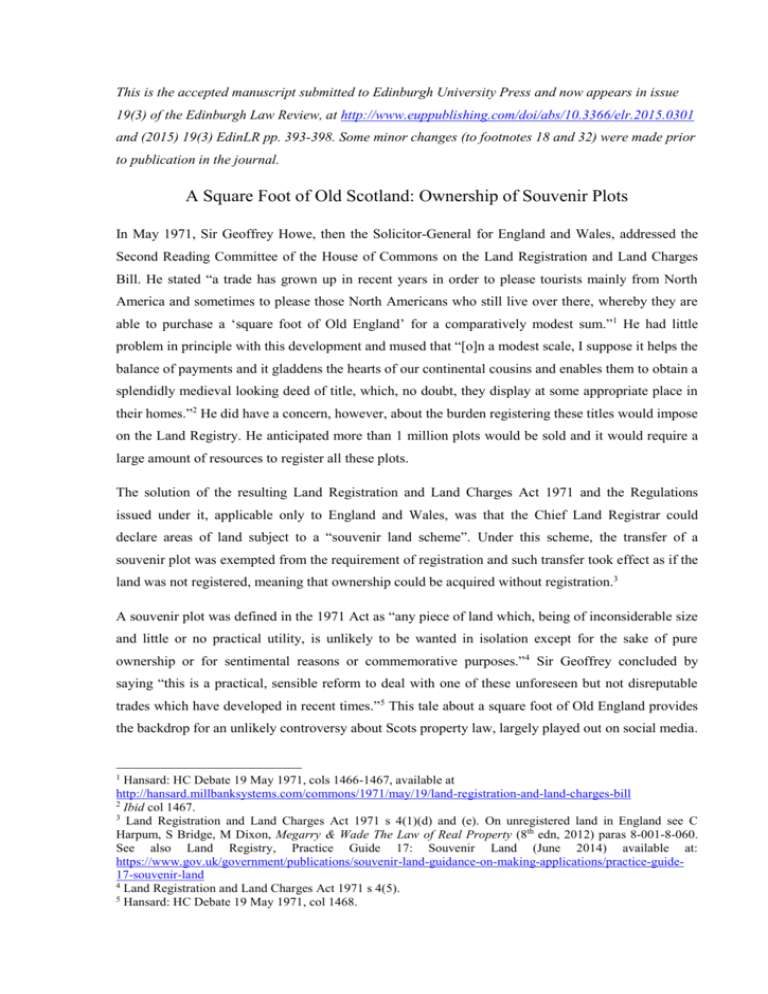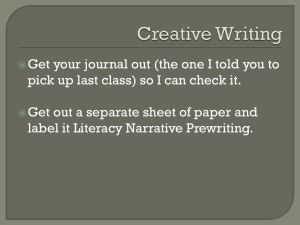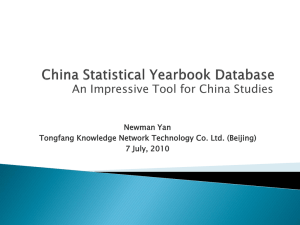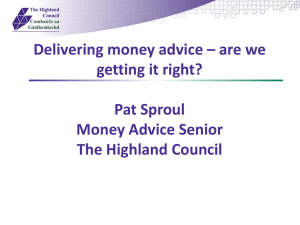Square_Foot_of_Old_Scotland_Robbie_Combe_AM_EdinLR
advertisement

This is the accepted manuscript submitted to Edinburgh University Press and now appears in issue 19(3) of the Edinburgh Law Review, at http://www.euppublishing.com/doi/abs/10.3366/elr.2015.0301 and (2015) 19(3) EdinLR pp. 393-398. Some minor changes (to footnotes 18 and 32) were made prior to publication in the journal. A Square Foot of Old Scotland: Ownership of Souvenir Plots In May 1971, Sir Geoffrey Howe, then the Solicitor-General for England and Wales, addressed the Second Reading Committee of the House of Commons on the Land Registration and Land Charges Bill. He stated “a trade has grown up in recent years in order to please tourists mainly from North America and sometimes to please those North Americans who still live over there, whereby they are able to purchase a ‘square foot of Old England’ for a comparatively modest sum.”1 He had little problem in principle with this development and mused that “[o]n a modest scale, I suppose it helps the balance of payments and it gladdens the hearts of our continental cousins and enables them to obtain a splendidly medieval looking deed of title, which, no doubt, they display at some appropriate place in their homes.”2 He did have a concern, however, about the burden registering these titles would impose on the Land Registry. He anticipated more than 1 million plots would be sold and it would require a large amount of resources to register all these plots. The solution of the resulting Land Registration and Land Charges Act 1971 and the Regulations issued under it, applicable only to England and Wales, was that the Chief Land Registrar could declare areas of land subject to a “souvenir land scheme”. Under this scheme, the transfer of a souvenir plot was exempted from the requirement of registration and such transfer took effect as if the land was not registered, meaning that ownership could be acquired without registration.3 A souvenir plot was defined in the 1971 Act as “any piece of land which, being of inconsiderable size and little or no practical utility, is unlikely to be wanted in isolation except for the sake of pure ownership or for sentimental reasons or commemorative purposes.”4 Sir Geoffrey concluded by saying “this is a practical, sensible reform to deal with one of these unforeseen but not disreputable trades which have developed in recent times.”5 This tale about a square foot of Old England provides the backdrop for an unlikely controversy about Scots property law, largely played out on social media. 1 Hansard: HC Debate 19 May 1971, cols 1466-1467, available at http://hansard.millbanksystems.com/commons/1971/may/19/land-registration-and-land-charges-bill 2 Ibid col 1467. 3 Land Registration and Land Charges Act 1971 s 4(1)(d) and (e). On unregistered land in England see C Harpum, S Bridge, M Dixon, Megarry & Wade The Law of Real Property (8th edn, 2012) paras 8-001-8-060. See also Land Registry, Practice Guide 17: Souvenir Land (June 2014) available at: https://www.gov.uk/government/publications/souvenir-land-guidance-on-making-applications/practice-guide17-souvenir-land 4 Land Registration and Land Charges Act 1971 s 4(5). 5 Hansard: HC Debate 19 May 1971, col 1468. 2 A. SCOTS LAW Section 4(2)(b) of Land Registration (Scotland) Act 1979, in the shadow of the 1971 Act, used a very similar definition of “souvenir plot”,6 albeit with a different effect. The provisions of the 1979 Act prohibited the Keeper of the Registers of Scotland from accepting an application for registration if it related to a souvenir plot. Thus, those who purchased souvenir plots could not register their title in the Land Register. They could not obtain the real right of ownership to the land. The only right they had was a personal right against the seller of the plot. The first edition of the Registration of Title Practice Book explained the policy of these provisions in similar terms to Sir Geoffrey. It was “not evidence of a stuffy bureaucracy. A scheme to sell off 1000 one square foot plots and register the titles thereto would employ the Keeper and his staff, public servants, in a way which could be detrimental to the expeditious registration of the titles of those whose interest was practical rather than sentimental or commemorative.”7 As part of its review of land registration, it was questioned by the Scottish Law Commission whether these provisions should change. In the Discussion Paper on Land Registration: Registration, Rectification and Indemnity8 it was observed the prohibition on registration of souvenir plots left the purchaser with little recourse in the event of re-sale of the plot or insolvency of the seller – these being the obvious disadvantages of holding merely a personal right. Further, the prohibition posed a barrier to achieving the goal of a complete and accurate Land Register as it prevents the inclusion of important information about certain transactions. However, there was some hint that those selling souvenir plots were viewed rather differently than Sir Geoffrey’s description as “not disreputable”. The Discussion Paper mentions that such sales “may involve an element of deception or represent a poor bargain”.9 The Report on Land Registration notes “[w]e have seen it suggested that the nonregistrability of souvenir plots means that ownership in them passes by simple contract. That is not so.”10 In the event, it was not proposed that the law should change.11 The Keeper and Scottish Law Agents, among others, wished the prohibition to continue. Under the resulting Land Registration etc (Scotland) Act 2012 section 22(1)(b), it is a general application condition for registration that the application does not relate to a souvenir plot. The definition of souvenir plot has changed to a piece of land which: “(a) is of inconsiderable size and of no practical utility, and (b) is neither (i) a registered plot, nor (ii) a plot the ownership of which has, at any time, separately been constituted or transferred Interestingly, the conjunctive “and” in the wording “inconsiderable size and no practical utility” was replaced by a disjunctive “or”. Recent Scottish reform, discussed below, has reverted to using “and”. 7 Registration of Title Practice Book (1981-1991) para C 31. 8 Discussion Paper on Land Registration: Registration, Rectification and Indemnity (Scot Law Com DP 128, 2005) paras 4.32-4.36. 9 Ibid para 4.32. 10 Report on Land Registration (Scot Law Com No 222, Vol 1) para 12.83. 11 Ibid paras 12.82-12.85. 6 3 by a document recorded in the Register of Sasines.”12 These changes link “size” and “utility” with the conjunctive “and” rather than disjunctive “or” and delete the unnecessary examples of sentimental or commemorative purposes, whilst allowing the transfer of plots which previously had been registered.13 B. HIGHLAND TITLES CONTROVERSY This provides the legislative background to a promoted message on a social media platform sent by an Alderney registered company called Highland Titles Limited. Although registered in the Channel Islands, it is the registered proprietor of land in Scotland and “Highland Titles” is registered in the UK as a trade mark of this company.14 At the time of writing, the micro-blogging site Twitter allows its users (in this case, @Highland_Titles) to purchase a message which other Twitter accounts will see even if they do not follow that user. A legally savvy, pseudonymous Twitter user @loveandgarbage read such a promoted tweet, advertising that for £29.99 you could buy one square foot of land in Scotland from Highland Titles and call yourself a Lord or Lady of Glencoe.15 He responded with incredulity. @loveandgarbage drew attention to the prohibition on registration of souvenir plots. Highland Titles responded that the 2012 Act “confirms the status of Souvenir plots”16 in that they can be sold without registration. This interpretation was disputed by @loveandgarbage, who found support from other Twitter users including one of the authors of the present piece, former President of the Law Society of Scotland Ian Smart and Regius Professor of Law at Glasgow University James Chalmers. One of the present authors then published a collection of online commentary on the website Storify documenting the debate.17 The controversy spawned a number of other blogs and newspaper articles on the subject.18 12 Land Registration etc (Scotland) Act 2012 s 22(2). See Discussion Paper on Land Registration: Registration, Rectification and Indemnity (Scot Law Com DP 128, 2005) para 4.36 and Report on Land Registration (Scot Law Com No 222, Vol 1) para 12.85. 14 Trade mark UK00003050154, filed with the Intellectual Property Office 4 April 2014 and entered on the register 24 April 2015. 15 Highland Titles Limited (@highland_titles) “Buy land in Scotland & you may style yourself as Lord or Lady of Glencoe! From £29.99. Visit your plot using our app” Twitter, 10:57am 5 December 2014, https://twitter.com/highland_titles/status/540822263210053632 16 Highland Titles Limited (@highland_titles), “Yes, the 2012 Act confirms the status of Souvenir plots - sold without registration http://tinyurl.com/ohu7mqk @loveandgarbage @MalcolmCombe” Twitter, 11:24am 10 Feb 2015, https://twitter.com/highland_titles/status/565109083234381824. Those following the tinyurl “shortlink” in that tweet were taken to a PDF of legal advice from a Scots law firm addressed “TO WHOM IT MAY CONCERN” dated 26 July 2013, hosted on the Highland Titles website at www.highlandtitles.com 17 Available at https://storify.com/MalcolmCombe/buy-land-in-scotland-style-yourself-as-lord-or-lad 18 Including M Combe, “Highland Titles Scam” 12 February 2015 available at https://basedrones.wordpress.com/2015/02/12/highland-titles-scam/; A Wightman, “Who owns Lord Glencoe’s plot?” 12 February 2015 available at http://www.andywightman.com/archives/4152; E Malley, “I can’t believe it’s not ownership – or the curious tale of Highland Titles selling” 12 February 2015 available at https://loveandgarbage.wordpress.com/2015/02/12/i-cant-believe-its-not-ownership-or-the-curious-tale-of13 4 Highland Titles is not the only entity to adopt a business model that advertises the sale (or indeed lease) of parcels of land in Scotland, but it found itself in the centre of this particular debate. Its own website and another supportive website became central to its claims about its business practice. The latter website makes some confusing statements: “the Land Registration etc. (Scotland) Act 2012 (and before it the Land Registration Scotland Act, 1979 [sic]), exists to permit souvenir plots of land to be sold without the expense of registration. Purchasers obtain a personal right to the plots of land by buying beneficial ownership rather than a ‘real right’.”19 As explained by Bain and Bury, “the fact that a plot of land may not be registered in the Land Register is ‘spun’ into being a positive, liberating factor, opening up simpler and cheaper options”.20 Clarity is lost when resort is made to “beneficial ownership”, a concept not established in Scots property law.21 As the sale of souvenir plots cannot be registered, ownership, which is itself a real right, cannot be acquired.22 The argument that transfer can take place without registration is closer to the law in England under the 1971 Act, summarised above, but bears little resemblance to the position in Scotland. In similar terms to the Scottish Law Commission, the Keeper has also refuted claims such as these by saying “the fact that the Keeper is obliged to reject registration does not necessarily mean that ‘ownership’ can be obtained by some other means.”23 A related issue raised by Highland Titles’ promoted tweet is how the titles Lord, Lady or Laird can be acquired. The word “Laird” is held out as a Scots descriptive title available to Scottish landowners and, in turn, this unlocks the English “Lord” or female equivalent “Lady”.24 The Lord Lyon has issued a statement that Laird is not synonymous with Lord or Lady and further noted that, whilst “Laird” is indeed a descriptive term for an estate owner, it is not an appropriate description for the owner of a small area of land.25 Indeed, as already noted, as it is not possible to register transfers of souvenir plots, one could not even be described as a “landowner” by virtue of the transfer. highland-titles-selling/ (It should be noted that Ern Malley has been used as a pseudonym for @loveandgarbage on Twitter and the “Love and Garbage” blog hosted by WordPress is linked to the @loveandgarbage Twitter account.); G Peaker, “On the naughty step: The Low Road edition” 13 February 2015 available at: http://nearlylegal.co.uk/blog/2015/02/naughty-step-low-road-edition/; N King, “Highland Titles: personal rights and personal rights” 27 February 2015 available at: http://neilslegalstuff.blogspot.co.uk/2015/02/highlandtitles.html; Sunday Times, “Plot thickens over Glencoe land sales” 15 March 2015. 19 Available at http://highlandtitlesscam.com/law/ 20 D Bain and C Bury, “Souvenirs of Scotland” (2012) 3 Aberdeen Student Law Review 120 at 121. 21 See analysis in E Malley, “I can’t believe it’s not ownership – or the curious tale of Highland Titles selling” 12 February 2015. 22 Section 50 of the 2012 Act makes clear a registered disposition transfers ownership, whilst an unregistered disposition does not. 23 Registers of Scotland, “Caution the souvenir hunters” (12 April 2012) Journal of the Law Society of Scotland available at http://www.journalonline.co.uk/Magazine/57-4/1011036.aspx. 24 See http://www.highlandtitles.com/ 25 Available at http://www.lyon-court.com/lordlyon/776.html 5 C. REFORM REQUIRED? The online debate encourages reflection on whether there is continuing justification for the prohibition on registration of souvenir plots. In England, the Land Registration Act 2002 Sch 13 brought souvenir plots into the land registration system by repealing the 1971 Act. Now ownership of souvenir plots can only be acquired through registration. In Scotland, at least for the next ten years, resources at Meadowbank House will be stretched by the aim to get all land on the Land Register by 2024. Thus, the initial reason for prohibiting registration is arguably still applicable. From a practical point of view, it is also difficult to identify the pieces of land because they are so small. Therefore, most will be unable to be located on the cadastral map and would be refused registration in any event.26 A separate policy argument might also be offered. The Scottish Government appointed Land Reform Review Group recommended in its Final Report that there should be an upper limit on the amount of land in a single ownership.27 What of the converse situation: can a holding be too small? Breaking land into tiny portions makes effective management of the land and future disposals difficult due to the consensus required between all landowners. Indeed, this method has been used in protest to controversial developments.28 Arguably, such sterilisation of land should not be encouraged. These factors contribute to a general interest justification for the restriction on the right of disposal in compliance with Article 1, Protocol 1 of the European Convention on Human Rights – a matter raised by Highland Titles on its website.29 A final thought should be given to the consumer buying such products. At one level, if someone wishes to pay £29.99 for a gift pack, a certificate and a land management arrangement that falls short of ownership, so be it. Indeed, the products will presumably be bought as light-hearted gifts, much in the same way as stars or bits of the moon are traded,30 so the lack of a real right to an asset of low 26 Land Registration etc (Scotland) Act 2012 s 23(1)(c) and s 26(1)(d). Land Reform Review Group, The Land of Scotland and the Common Good (2014) section 24, para 29 available at http://www.gov.scot/Publications/2014/05/2852. See M Combe, “Land Reform Revisited: The Land of Scotland and the Common Good” (2014) 18 EdinLR 410. The Scottish Government did not adopt this exact proposal: see “A Consultation on the Future of Land Reform in Scotland” which closed on 10 February 2015 and the analysis of responses available at: http://www.gov.scot/Publications/2015/05/5787 28 Such as when Friends of the Earth bought Alice’s Meadow in Fencott and Murcott, England and sold it off in tiny plots in an attempt to prevent the M40 motorway crossing Otmoor. An analogy with subdivision of common property into very small pro indiviso shares might also be made, as per Menzies v Macdonald 1854 16 D 827, aff’d (1856) 2 Macq 463 and as discussed by Bain and Bury (n 20) at 124. 29 “Response to criticism on Twitter” 23 February 2015 available at: http://community.highlandtitles.com/2015/02/response-criticism-twitter/ 30 See, for example, http://www.buyastar.co.uk 27 6 economic value might not be a significant concern.31 Subject, that is, to the (not insignificant) caveat that no customer is actually gulled into making a purchase in the hope of landownership.32 D. CONCLUSION Twitter is an unpredictable platform. The furore around an obscure aspect of Scots property law is a fine example of that unpredictability. One thing that is not unpredictable is the law surrounding souvenir plots, settled as it is by the recent implementation of the 2012 Act and the fact that current land reform proposals of the Scottish Government contain nothing on souvenir plots. There was no need to have recourse to Twitter to demonstrate these settled rules, but social media and the blogosphere certainly provided an ideal forum for them to be articulated to a surprisingly wide and interested audience. That audience now knows that sellers of souvenir plots are not providing their customers with ownership of land. Jill Robbie University of Glasgow Malcolm M Combe University of Aberdeen See Miller Samuel Solicitors “The Scottish souvenir title “scams” – a storm in a teacup?” 17 April 2015 available at http://www.millersamuel.co.uk/Blog/residential-property/the-scottish-souvenir-title-scams-a-stormin-a-teacup.html 32 In fact, the advertising of Highland Titles regarding titles has been held to be misleading by a decision of the Advertising Standards Authority 20 March 2014 available at: http://asa.org.uk/Rulings/Adjudications/2014/3/Highland-Titles-Ltd/SHP_ADJ_243404.aspx#.VUn0uNRwa2z 31







